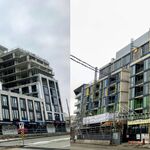This is the latest in a long string of severe problems in DC to do with deferred maintenance, safety issues and generally questionable operating practices. It's an extremely troubled system, despite an impressive-looking network and decent success generating suburban transit-oriented development.
But in fact, even when it is running properly the Metro is amazingly useless. Midday frequencies can be 12 minutes or longer, which Torontonians would find absolutely absurd. The network also makes a hard turn to actually avoid serving Georgetown, the busiest retail area in town, leaving its main drag clogged with bumper-to-bumper buses.
Metro was never really designed as a high-capacity urban subway -- more as fancy commuter rail, to funnel suburbanites to federal jobs downtown in the morning and out again. If you live in the District itself, you're almost always better off taking a bus or even walking.





